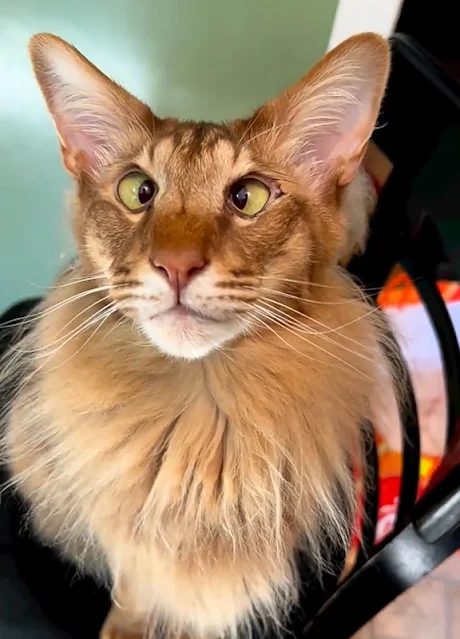Strabismus is the scientific term for a squint and this Oriental Longhair has a very bad one. It is the worst example I have seen. As you might know, the Siamese cat is predisposed to the squint. And the Oriental cat both long and shorthair is part of the Siamese cat family by which I mean they inherit a similar set of genes i.e. the genotype is similar. And for this reason, I think it is fair to say that you will see the squint in Oriental Shorthair and Longhair cats more often than is typically encountered amongst the general domestic cat population.
 |
| Oriental Longhair with an enormous squint. Screenshot. |
I have a page on what causes this condition which you can read by clicking on this link if you wish. The important fact about the squint in cats is that they compensate for the optical and brain wiring that has gone wrong and scientists believe that they are able to see normally which is hard to imagine when you look at this guy with his enormous squint.
The Siamese cat spawned a lot of other cat breeds such as the Oriental and cat breeds such as the Javanese and Thai.
RELATED: Thai cats – describing their place in the Siamese cat family.
The experts might be incorrect about the squint not affecting vision for the Siamese and cats in the Siamese cat family. I say this because humans can also develop a squint particularly in children. And it is corrected in various ways because if it is not dealt with, they say that it might cause "persistent blurred or double vision".


